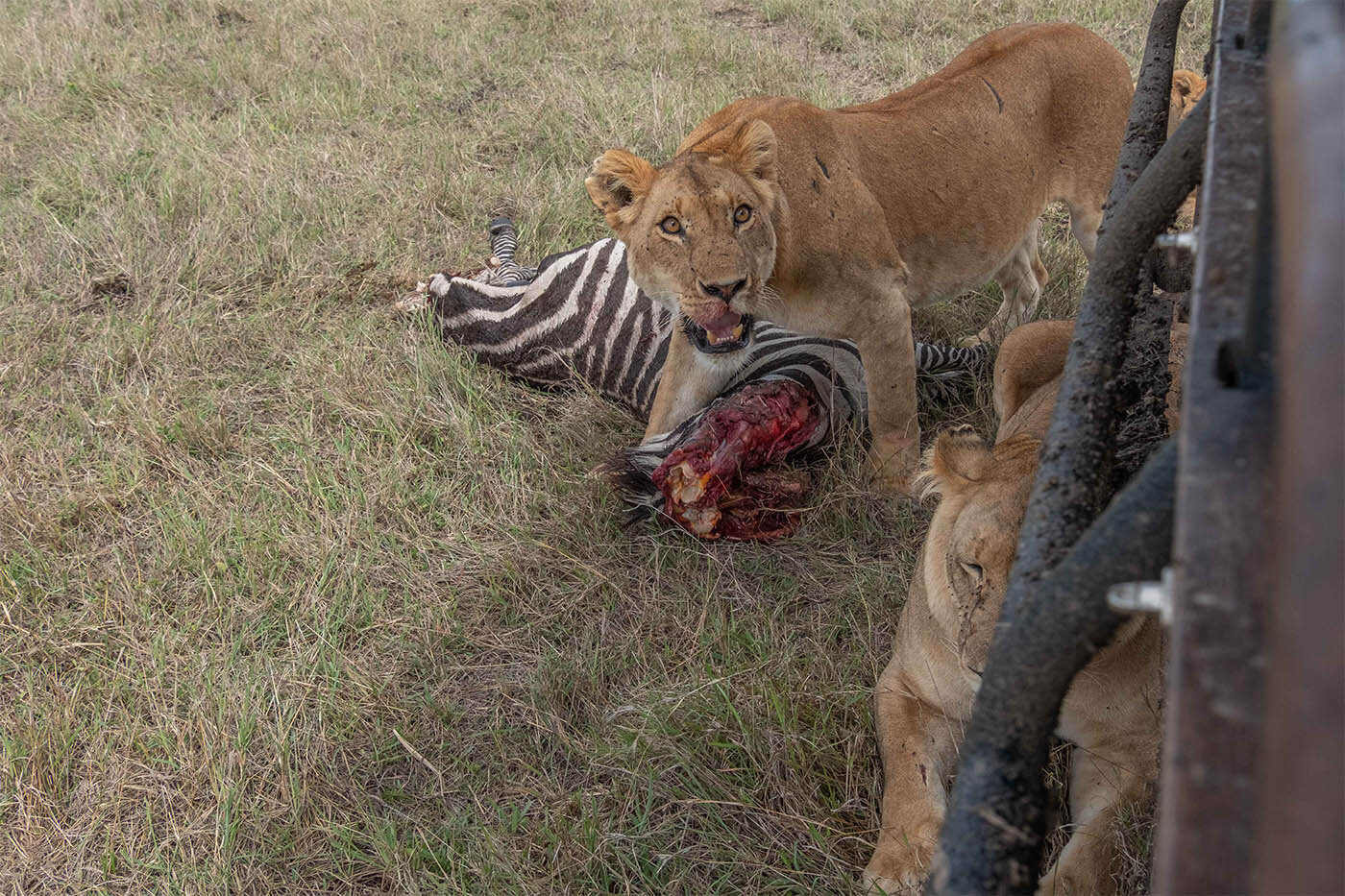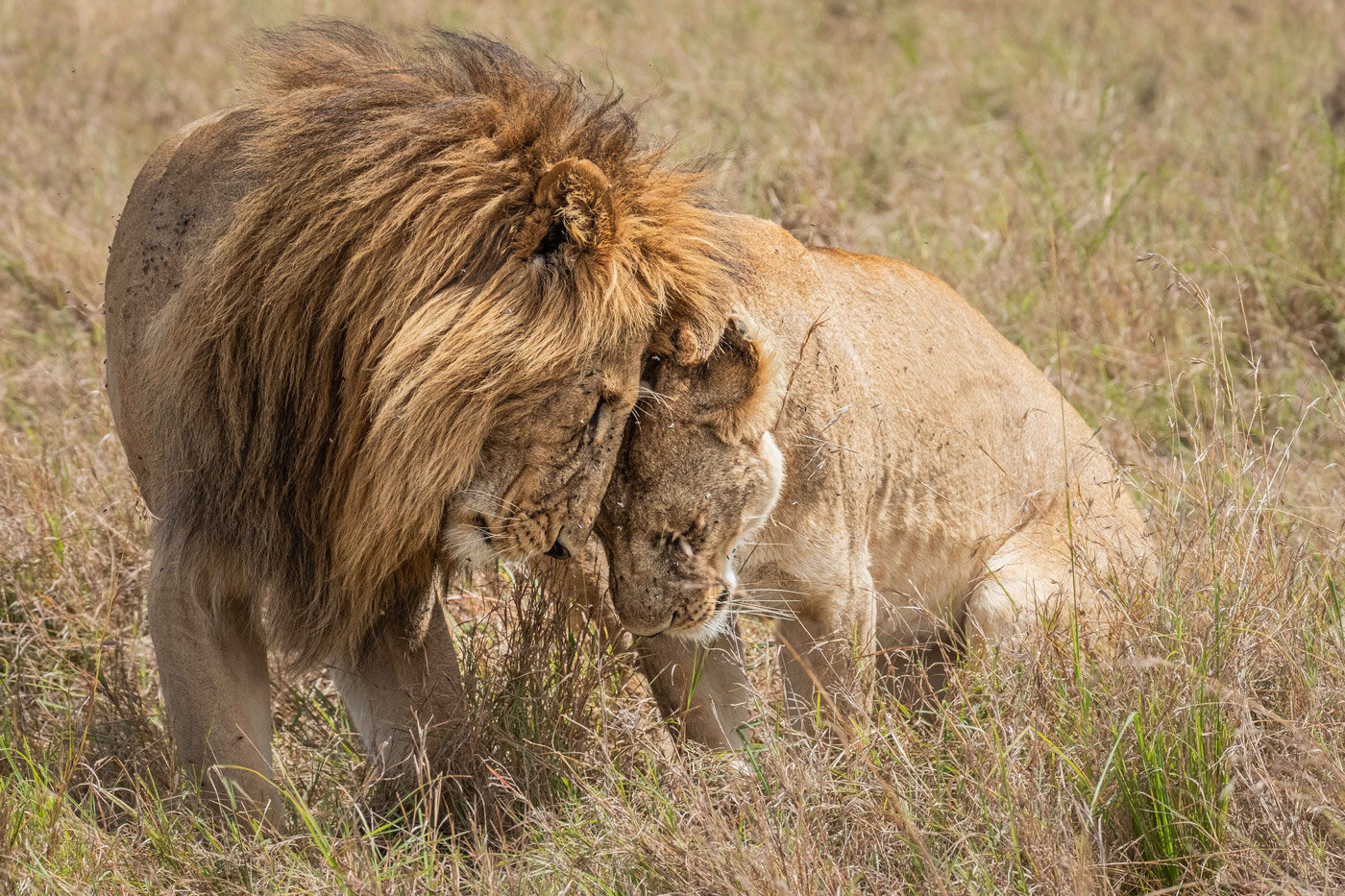Lions on the Maasai Mara
“Pay attention. Be astonished. Tell about it.”
Poet Mary Oliver’s words are straightforward: “Pay attention. Be astonished. Tell about it.” Watching the sun rise on the Maasai Mara fuels attention and astonishment. Seeing Africa’s iconic wildlife in their natural setting is like stepping through the TV screen into the magic of Africa. Even after a few years of game drives in Kenya, being in the midst of African wildlife still feels like a pinch me moment. In April 2019 I had 3 days on safari with two Maasai guides, Dominic Matai and Joseph Mutemi. Our game drives were particularly memorable because of the many encounters we had with lions. The Mara has several distinct lion prides and individuals and we met many of them. On two separate occasions we hung out for over an hour with mothers and their cubs while their cubs played games of stalk, chase and attack only a few meters away.
One morning we came across a couple of females who had killed a zebra. The sun was up and the day was hot. They were alone on the Mara in the blazing sun with their kill, 3 large cubs and nowhere to stash the meat or rest in the shade.
Our vehicle’s shadow was the only solution for respite from the heat in the cats’ minds. With great difficulty one of the females dragged the carcass to us while the rest of the group flopped down beside the truck a few feet from my lens.
Later we came across a pair of mating lions who decided they could also snuggle up to our vehicle and rest in our shade. Seeing these big cats behaving like domestic felines can make one forget that these animals are some of the fiercest, most powerful predators on the savannah.
The Maasai have a special connection with lions. They have lived alongside them for centuries. Killing a lion was the culminating test of initiation into Warriorhood for a young Maasai Warrior. Training begins early in a boy’s youth. They use only traditional weapons, the spear, bow and arrow, club and machete. On my first long walk on the Savannah with a Maasai Warrior, Felix, my young guide, told me how he protected his cows from a lion attack in his late teens. “I heard a sound at the back of the herd. A lion was taking down a cow. I threw my spear, wrapped my left arm with my shuka (traditional plaid wrap worn by Maasai men) and ran at the lion with my machete and cut its throat.”
I was gobsmacked and imagined lions hiding behind a hill in front of us. “Why did you wrap your left arm?” I asked as I tried to wrap my brain around this story.
“So I could push my left arm into his mouth while I cut his throat with my right.” Of course, I thought, remember that point – wrap left arm, push in mouth, stab with right….. Maasai boys train for years for a moment like this. Their hunting and weapon skills plus a legacy of commitment to protect their animals and community runs deep in their veins.
A Warrior that has killed a lion is entitled to wear a headdress made with the lion’s mane. Felix also told me that he was just married. His parents had arranged his marriage and the first day his bride met him was when he arrived for the wedding ceremony in full Maasai regalia. “Ah,” I said with respect, “she knew you had killed a lion the moment she saw you”. “Yes”, he said smiling with pride. Before she even knew him she knew he had proven himself to be a brave warrior. I felt even safer as we continued our walk.
With lion numbers shrinking it is no longer legal to kill lions in Kenya. Getting an education is the new rite of passage for young Maasai and that is no easy feat either. However, the centuries old bond of mutual respect, strength and courage between the warrior and lion remains. I witnessed this connection when Joseph and the lion locked eyes in a powerful moment beside our truck.
Despite the number of healthy prides that we saw on the Maasai Mara, the number of African lions has dropped 50% since The Lion King premiered in theatres in 1994. Conservation programs like Warrior Watch, part of National Geographic Society’s Big Cats Initiative, recruits young Samburu men—who are traditionally excluded from conservation and wildlife management conversations—to scout areas surrounding their communities for lions so they can alert herders to take their cattle away from the threat of predators.
Some conservation models reward communities that show an increase in lion numbers, which provides an incentive not to poach or retaliate against them for livestock kills. Compensation schemes work similarly, paying livestock owners to replace animals that are killed by lions. These kinds of programs can change a community's overall attitude toward animals they may have previously been seen as a threat to safety and livelihood.
Learn more about lion conservation and how you can help here.
Listen to Moreangels Mbizah describe how community-led conservation can save wildlife in the following TedTalk:








